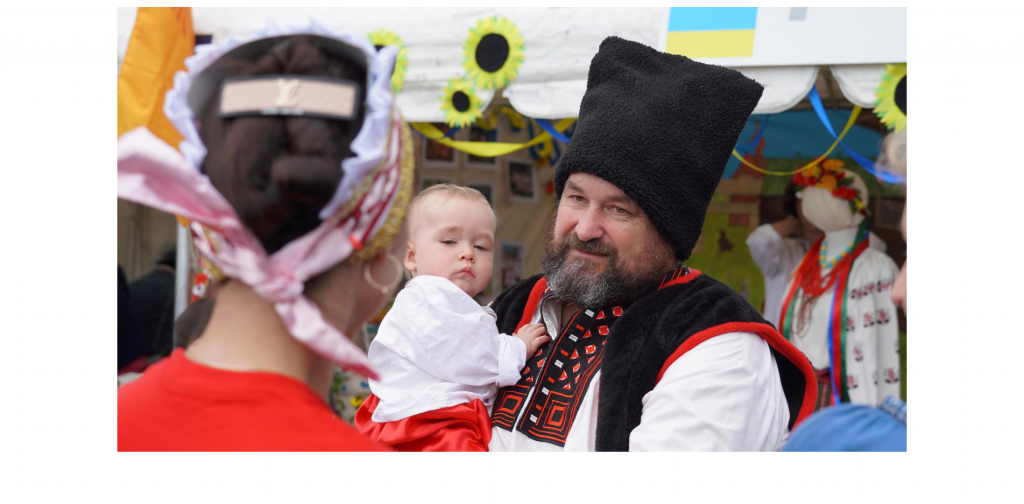Wellington is home to thousands of people of Ukrainian and Russian descent, as well as people from Polish, Belarusian, and other Eastern or Central-Eastern European backgrounds. The current conflict between Ukraine and Russia means that people who have moved here from those countries, or who have family there, are probably feeling pretty anxious, scared, or upset right now. And of course, whenever there is conflict happening somewhere in the world, it tends to find its way into our everyday lives — through the news, through TV or internet content, or through our friends or teachers at school talking about it — and it’s completely normal for that to make us feel a bit scared or anxious as well.

The Ukrainian stall at the Palmerston North Festival of Cultures in 2018. Note the Ukrainian flag in the background, as well as all the sunflowers — the sunflower is the national flower of Ukraine. Image courtesy of Palmerston North City Library, licensed under CC BY 4.0.
One way that we can help ourselves, and others, is by learning as much as we can about the history and culture of those places, and how news gets created and reported. If we learn about that, we can understand more about what’s going on at the moment in Ukraine and Russia — which means we’ll be more aware of, and better able to process, what’s being reported in the media and what our friends, whānau, and the wider community are talking about.
The good news is that the library has a whole heap of resources — books and other things — to help you learn more about Ukraine, Russia, international conflict, and the media more generally. Read on to find out how the library can help you understand what’s going on in the world at the moment.
 HINT: Many of the links in this blog go to the Encyclopaedia Britannica for Kids. This is accessible to all Wellington City Libraries patrons. But to access this wonderful resource, and the others mentioned in this blog, you’ll need to login using your library card number (on the back of your card) and 4 digit pin (last FOUR numbers of the phone number listed on your library account), and the link will take you straight there.
HINT: Many of the links in this blog go to the Encyclopaedia Britannica for Kids. This is accessible to all Wellington City Libraries patrons. But to access this wonderful resource, and the others mentioned in this blog, you’ll need to login using your library card number (on the back of your card) and 4 digit pin (last FOUR numbers of the phone number listed on your library account), and the link will take you straight there.



